Lt Gen JS Bajwa – Editor Indian Defence Review (IDR) had the unique privilege to interview the Chief of the Army Staff General Manoj Pande, PVSM AVSM, VSM, ADC. Details of the candid response of the Chief of the Army Staff to the IDR’s pointed questions are given below:-
Q1. In the last few years China has blatantly transgressed across the LACa number of times over the entire length of the border along the northern front. Since the PLA is the aggressor it has the initiative and choses the time and place for transgressions. As a result, the Army is compelled to maintain a constant vigil along the LAC to react in an early time frame. There is a need to pre-empt the PLA as was done in Yangtze on 09 December 2022. What measures are being instituted to achieve this?
COAS: As you are aware, ensuring territorial integrity, peace and stability along our borders remain the top priority for Indian Army. Emerging threats are being identified timely & steps are taken to enhance our capability to counter the same.
The Indian Army is maintaining a balanced yet robust deployment in all sectors along the LAC, with adequate reserves in depth. We are well poised and postured to deal with any emerging contingency along the Northern Borders. While we are abiding by all agreements and protocols, should there be any attempt by the adversary to alter the status quo, it will be contested by own troops in a firm and resolute manner.
Notwithstanding above, Indian Army has undertaken proactive measures to enhance ISR capability all across our Northern borders. These include several measures at strategic, operational and tactical levels such as procurement of MALE class of RPAs for strategic aerial ISR and procurement of mini and micro RPAs for operational and tactical level. We have also procured multiple surveillance devices which have been deployed along Northern Borders.
Moreover, in addition to Indian Army, there are multiple agencies that are operating along the Northern Borders, which include ITBP, Intelligence agencies and the Civil Administration. These agencies are supporting and complimenting the Indian Army, be it in physical domination of the LAC, ISR or Infrastructure development by adopting a ‘Whole of Nation’ approach.
I can assure our countrymen that any action by our adversary along the borders will be responded in a firm and resolute manner.
Q2. While it is an accepted fact that “change is the only constant in life” institutions like the Army are reluctant to change the existing status quo. The need of the hour is reconfiguration at the tactical level. What is the configuration of a tactical level force that is visualised will be most effective in future hybrid multi-domain war scenarios particularly in the mountains? What is the time duration for completing this transformation?
COAS: We are undertaking a number of Transformation initiatives to emerge as a strong, modern, technologically oriented, lean and agile force, to be able to meet contemporary and future security challenges, more effectively. The process of transformation would continue beyond 2023 till the end-states and milestones we have set for ourselves are achieved.
The transformation of the Indian Army is being pursued across multiple domains.
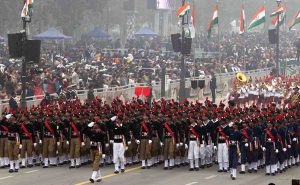 These are, firstly, in the Human Resource Management domain, wherein a path breaking initiative has been taken by the implementation of the Agnipath scheme.
These are, firstly, in the Human Resource Management domain, wherein a path breaking initiative has been taken by the implementation of the Agnipath scheme.
Secondly, pursuing Modernisation and Technology Infusion through a focused road map for bringing in niche and disruptive technologies by complementing the Atmanirbharta in Defence initiative.
Thirdly, is Force Structuring and Optimisation where in restructuring and reshaping of our organisational structures and optimisation of legacy organisations and establishments, is underway.
Fourthly is the domain of achieving better Jointness & Integration.
Lastly, we are also focused on transformation of our Processes and Functions in order to bring in greater efficiency, agility and automation in our operational, administrative and functional operational methodology.
In matters pertaining to National Security, the solutions cannot lie in a single domain. Each organ of the State has a role to play and in doing so, an integrated effort to effect an aggregated response is the way ahead.
With managing two live borders and other operational commitments, we are cognizant of the fact that the entire gambit of transformational initiatives can only be completed over a period of time. We have issued a comprehensive road map for the Year 2023 that has definite and quantifiable actions to achieve accelerated impetus to ongoing transformational initiatives as well as implement SOPs for their seamless inter/ intra domain assimilation and harmony.
The key thrust area of ensuring the highest standard of operational preparedness to meet contemporary and emerging challenges, across the entire spectrum of conflict, will be the overarching end state which will direct IAs transformation process.
Q3. Theatreisation has been the form at operational and strategic level adopted by the West. Since those countries do not have an enemy in eye-ball-to-eye-ball contact over contested borders so they have configured their forces to deal with varied contingencies by building flexibility and commensurate capabilities. Though China does have Theater Commands but these are organised regionally against specific adversaries and the threats they pose; much like Indian Army Commands. How will India’s push for Theatre Commands alter the war waging capability of the existing system of Army Commands given the overall resource constraints?
COAS: Theatre Command models of other nations are congruent to their security and force projection needs, geo-strategic pursuits and availability of resources. India’s security imperatives are unique and hence, no template can be imbibed, as such.
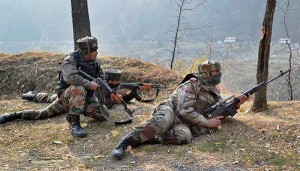 Our Armed Forces need to be always prepared to execute a robust response for the multi-spectral challenges that we face. We need to be prepared to fight a conventional war, while continuing to guard our multi front borders, countering proxy war and insurgencies, defend our island territories, be prepared for Out of Area Contingencies and dominate our seas and skies.
Our Armed Forces need to be always prepared to execute a robust response for the multi-spectral challenges that we face. We need to be prepared to fight a conventional war, while continuing to guard our multi front borders, countering proxy war and insurgencies, defend our island territories, be prepared for Out of Area Contingencies and dominate our seas and skies.
Therefore, we need a tailor-made model suited to Indian requirements. While I say this, we all understand that establishment of Integrated Theatre Commands is mandatory in order to bring jointness and enhance our operational efficiency.
Aggregated employment of individual Service capabilities is an imperative for orchestrating integration. The Indian Army stands fully committed to jointness and synergy amongst the three Services. Not just Army, the Indian Air Force and Indian Navy too are willing and committed towards integration.
Some changes in structures, Command and Control arrangements and functioning are inescapable in such major structural initiatives. These are being deliberated and concretised at the level of the Service HQ and will be declassified in due course.
Theatre Commands will work as a single entity, looking after all forms of security challenges in a specified theatre under one operational commander.
Q4. “Aatmnirbharta” is, undoubtedly, the most important initiative by this Government. However, in the process of induction of new technology the Armed Forces need to be coopted in the process from the R&D stage itself. It should apply to disruptive technologies too. How does the Army plan to ensure that such coordination is firmly in place and that R&D does not go off at a tangent to the Army’s future requirements?
COAS: The current global scenario has once again highlighted that countries that are self-reliant and have more secure supply chains will be able to withstand the geo-strategic turmoil and challenges far better than others. As a major global player, India is moving ahead with the mantra of Make in India – Make with the World& Make for the World.
The four primary building blocks for developing this AtmaNirbhar Bharat ecosystem are Resource Allocation, Viable Market, Enabling Policies & Competition. These are the four pillars of ‘defence indigenisation’ and need to be strengthened. The role of Services lies in being a facilitator for policy execution and for providing a viable market for the defence manufacturers.
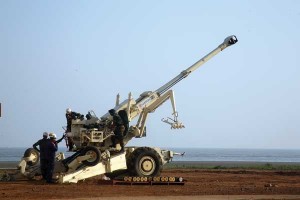 Let me assure you that formal mechanisms have already been instituted to integrate the Army into the R&D process from the inception stage to the final development.
Let me assure you that formal mechanisms have already been instituted to integrate the Army into the R&D process from the inception stage to the final development.
The Indian Army follows a two way approach to undertake R&D. Firstly the User requirements defined by the Army are taken up with the Industry and the Academia. For example the release of the Compendium of Problem Definition Statements or the Defence India Start Up Challenge define the user requirements based upon which Industry and the Academia takes up R&D. Secondly we also accept Suo Moto proposals from the Industry and the Academia for R&D.
Before the project is initiated, the requirements and deliverables are clearly specified, which are evolved jointly by the developers/innovators/researchers and the subject Matter Experts of the Indian Army. Once the project starts the Army remains integrated into the process of development until its culmination. For example, in case of iDEX challenges a nodal officer is nominated from the domain specific training institution to steer and guide the project and carry out the necessary course corrections where required. Simultaneously the project is monitored at all levels right upto the Army HQ during the course of its development.
In order to promote the Indian Industry, one of the most important aspects is handholding and providing opportunities to the indigenous players. There has been manifold increase in the value of indigenous contracts placed by the Army with the Indian Industry from 2018-19 to 2021-22. By 2024-25 more than 230 major contracts worth 2.5 lakh Cr are likely to be with Indian industry. The Indian Army is the largest contributor to the Positive Indigenisation lists.
The Indian Army has demonstrated its resolve and commitment to the Make in India Defence initiative. We are fully committed to winning India’s wars with Indian Solutions. It now remains for all of us to translate this wonderful opportunity into a tangible success story on ground. I would summarise by saying that we have evolved from a Buyer-Seller relationship to one of partnering with the Industry.
Q5. HAL’s ALH-WSI Rudra, LCH Parchand and Boeing’s Apache have been inducted in the Army Aviation Corps and IAF. The first batch of Apaches was to be inducted into the Army but for whatever reasons were inducted into the IAF. The Army was allotted a token of six helicopters to silence critics, probably. Communication helicopters, Light Utility helicopters and attack helicopters should be the primary systems of the Army Aviation Corps leaving the heavy rotary lift capability to the IAF. Is there any plan to expand and invigorate the Army Aviation Corps accordingly?
COAS: The Army Aviation endeavours to achieve capability development to meet RW (Rotary Wing) & RPAS (Remotely Piloted Aircraft System) requirement of Indian Army so as to effectively counter the evolving threat in the neighbourhood.
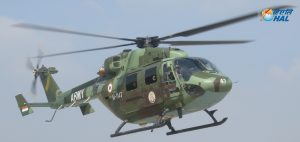 The Army Aviation operates a largest fleet of R&O helicopters (Cheetah/Chetak), Utility Helicopter (ALH) and combat helicopters (ALH-WSI and LCH). In addition, Army Aviation is also the largest operator of RPAS covering Western & Northern front.
The Army Aviation operates a largest fleet of R&O helicopters (Cheetah/Chetak), Utility Helicopter (ALH) and combat helicopters (ALH-WSI and LCH). In addition, Army Aviation is also the largest operator of RPAS covering Western & Northern front.
Army Aviation is undertaking its capability development through the indigenous route with an aim to meet Rotary Wing and Remote Pilotless & RPAS requirements of Field Formations in the TBA (Tactical Battle Area).
ALH & ALH-WSI platforms have proven their capability. The requirement of Reconnaissance & Observation helicopters, for the Indian Army, will be incrementally met with the induction of Light Utility Helicopter.
Additional squadrons of ALH Mk-III and ALH-WSI are being planned for induction in the immediate future.The LCH which is specifically designed for HAAs has also been inducted into service. The impending induction of Apache helicopters will also complement the requirement of Attack helicopter stream.
Army Aviation also operates RPAS having of flights of MALE RPAS on its inventory. The future procurement includes additional MALE class, HALE class and runway independent (RWI) remotely piloted aircraft system.
Q6. Infrastructure network upto the IB/LAC in the North has been a constraint which has impacted the Army’s reaction capability. In Arunachal Pradesh, in particular, there are numerous agencies undertaking road development depending on the source of the funding. Many are working at cross-purposes. The State Environment Ministries also often create impediments. Local laws restricting employment of outsiders and also restrictions on sourcing of construction material could be responsible for inferior quality of raw material as also add to the delay in completion of projects. How is the Army tackling these issues so that strategic roads projects are not hijacked by inimical forces?
COAS: We are fully focussed on development of operationally critical infrastructure. Concerted effort is being made to bridge the differential by adopting ‘Whole of Nation’ approach duly incorporating all construction agencies and budget heads. We are synergising the efforts with other ministries and utilising various flagship programmes of the Government.
Development of requisite infrastructure to support operational and logistic requirements on the Northern Borders is being undertaken to include construction of critical roads, tunnels, railway lines, construction / resuscitation of Airfields, Advanced Landing Grounds and Helipads to enhance connectivity in difficult terrain and weather conditions. Many Operational works, green energy projects and road connectivity projects are in pipeline for future. Overall, our own infrastructure development along LAC has seen remarkable improvement.
We have recently promulgated the facilitating provisions for construction of critical infrastructure through operational works to provide further impetus to infrastructure development.
Operational necessity to expedite grant of environmental/ forest/ wildlife clearances has been intimated to MoEF& CC. One time waiver for operationally critical roads has been sought from MoEF& CC and requirement of a facilitating mechanism to provide exemption from seeking prior clearances has also been highlighted.
Q7. “AgniveerYogna” has been controversial and in debate for its pros and cons since its announcement. With the limited training period available to the newly recruited Agniveer, there is an apprehension that such a soldier will not be sufficiently trained to undertake the tasks and missions which are expected of him. This will be felt more in the technical arms and services. Countries which follow a conscript system generally retain the technically qualified personnel for enhanced periods in service. With two active borders and ongoing counter-terrorism/insurgency operations, actually, the Army is in an active operational mode at all times. Thus those Agniveers being inducted into units and formations in operationally active areas will be undergoing “on the job training” – even in operations on the Siachen Glacier!! How does the Army plan to tackle this serious anomaly?
COAS: At the outset, let me reiterate the fact again that Agniveer is not a conscript system. Drawing parallel with models of other countries would be an injustice to not only the efforts of multiple agencies who deliberated this for years but also to the patriotism of the youth of this country.
The intention of this scheme is to lower the age profile of the Army as a whole, at the same time inducting technical manpower for a limited duration. This is a win-win situation both for the individual as well as the organisation.
Since the recruitment system is centralised, automated, objective and rigorous, we will ensure that youth from all across the country with a desire to serve the Nation are selected. We are also offering 25% of selected Agniveers to be a permanent part of the Army, once their initial contract of four years is over.
As you are aware, the Indian Army has a systematic approach towards training which lays stress on discipline, a scientific outlook and a functional mode of operating.
Apart from the training imparted in the centres which forms the first layer of inculcating discipline, the second layer is the unit to which the Agniveer will be enrolled for his four years of employment. The tasks, training calendar and operational duties will enforce a sense of loyalty and duty to the organisation and the country.
The third layer will comprise interactions with peers, senior NCOs/ JCOs and officer which will add to the Agniveer’s personality and enable him to experience the Army as a ‘way of life’. A period of ‘On Job Training’ has also been catered for Agniveers so as to transition them into the allocated op role and unit life.
All these layers will ensure that adequate discipline and ethos is imparted to the Agniveer in his four years of employment.
I wish to state that the apprehensions on the training and the skill sets of the Agniveers are unfounded. There won’t be any compromise on the skillset of Agniveers. We will deploy Agniveers on all active borders.




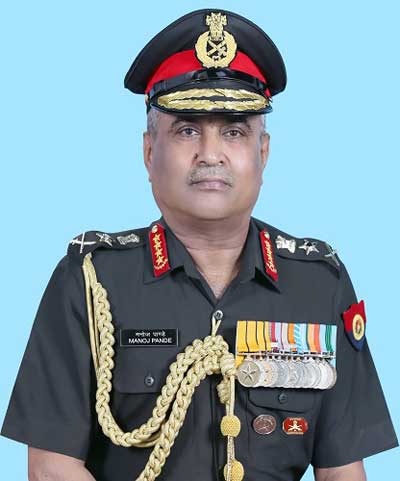

“… should there be any attempt by the adversary to alter the status quo, it will be contested by own troops in a firm and resolute manner.
…
I can assure our countrymen that any action by our adversary along the borders will be responded in a firm and resolute manner.”
How does such bravado stand up to the ground reality ???
Here is a latest report: https://thewire.in/security/india-lost-26-of-65-patrolling-points-in-eastern-ladakh-china-installed-pickets-paper
To quote:
“Presently, there are 65 PPs starting from Karakoram pass to Chumur which are to be patrolled regularly by the ISFs (Indian Security Forces). Out of 65 PPs, our presence is lost in 26 PPs (i.e. PP no. 5-17, 24-32, 37, 51,52,62) due to restrictive or no patrolling by the ISFs. Later on, China, forces us to accept the fact that, as, such areas have not seen the presence of ISFs or civilians since long, the Chinese were present in these areas.”
Cautioning that such an approach has led to China gradually taking over Indian territory, the report said: …
“Till September 2021, senior officers of district administration and security forces would easily patrol till Karakoram Pass (35 km from Daulat Beg Oldie) in the DBO sector, however, restrictions in the form of check posts were placed by the Indian Army since December 2021 at DBO itself to stop any such movement towards Karakoram Pass as PLA had installed cameras and they would immediately raise objections on the movement from Indian side if not informed beforehand,” it read